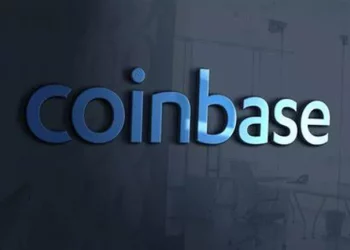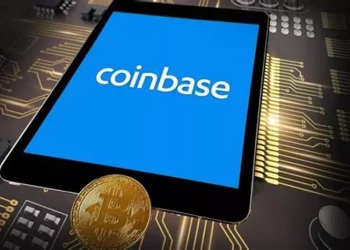Binance, one of the world’s largest cryptocurrency exchanges, offers a wide array of services that allow users to trade and manage digital assets. One of the essential components of using Binance is understanding the concept of an “address.” In the world of cryptocurrency, an address serves as a unique identifier that enables users to send and receive digital assets. In this article, we will explore what an address on Binance is, why it is important, how to use it, and everything you need to know about cryptocurrency addresses on Binance.
Introduction to Binance and Addresses
Binance is a global cryptocurrency exchange that allows users to trade a variety of digital assets like Bitcoin (BTC), Ethereum (ETH), Binance Coin (BNB), and many other altcoins. As a central hub for cryptocurrency trading, Binance provides users with a range of tools, including spot trading, futures trading, staking, and even a launchpad for new cryptocurrencies.
To use Binance effectively, users must have an address, as this is where their cryptocurrencies are stored and transferred. Addresses on Binance are similar to bank account numbers in the traditional financial system. They allow users to receive funds, transfer assets, and keep track of their digital holdings. Understanding Binance addresses is crucial for any user to navigate the platform efficiently and securely.
What is a Binance Address?
A Binance address is a unique alphanumeric string assigned to users when they deposit or withdraw cryptocurrencies on the platform. These addresses are associated with specific wallets on Binance and are used to facilitate the transfer of cryptocurrencies to and from the platform.
Each cryptocurrency on Binance has a distinct address format. For example, Bitcoin addresses usually start with a “1” or “3” and consist of 26 to 35 characters, while Ethereum addresses are longer and start with “0x.” These addresses are generated automatically when users choose to deposit or withdraw a particular cryptocurrency.
A Binance address is essential because it acts as the destination for funds. If you want to send Bitcoin to someone on Binance, you need their Bitcoin address. Similarly, if you want to receive Bitcoin on your Binance account, you will need to provide your Bitcoin address.
Why are Addresses Important on Binance?
Addresses are vital because they allow you to move cryptocurrencies from one place to another. Whether you are depositing funds into your Binance account, transferring crypto to another user, or withdrawing funds to an external wallet, addresses are at the core of every transaction.
Depositing Funds: To deposit cryptocurrencies into your Binance account, you will need to generate a deposit address. This address will be used to send your assets from your wallet or another exchange to Binance.
Withdrawing Funds: Similarly, if you want to withdraw funds from Binance to an external wallet, you will need to provide the withdrawal address. This ensures that the digital assets go to the correct location.
Security: By using a unique address for each transaction, Binance minimizes the risk of errors. Additionally, these addresses are cryptographically secured, which ensures that the funds are only accessible by the correct private key holder.
Tracking Transactions: Addresses are also important because they allow users to track the status of their transactions. Each address is linked to a transaction hash, which can be traced on the blockchain to confirm that funds have been sent or received.
Privacy: While addresses are public on the blockchain, they provide a level of privacy. A user’s identity is not directly tied to their address, but it can be used to trace the flow of funds.
Types of Binance Addresses
There are various types of addresses on Binance, each linked to different cryptocurrencies. Binance supports numerous cryptocurrencies, and each one requires its own specific address. Below are some of the common address types on Binance:
1. Bitcoin (BTC) Address
A Bitcoin address is one of the most well-known address types. It is used to receive and send Bitcoin on the blockchain. Binance generates a unique Bitcoin address for each user when they wish to deposit Bitcoin into their account. Bitcoin addresses generally start with a “1,” “3,” or “bc1,” depending on the type of address (Legacy, SegWit, or Bech32). These addresses are alphanumeric and are 26 to 35 characters in length.
2. Ethereum (ETH) Address
Ethereum addresses are used to receive and send Ether (ETH) and ERC-20 tokens on the Ethereum network. Ethereum addresses typically start with “0x” followed by a 40-character alphanumeric string. Binance generates these addresses when users wish to deposit or withdraw Ether or Ethereum-based tokens.
3. Binance Coin (BNB) Address
Binance Coin (BNB) is Binance’s native cryptocurrency. Binance generates a unique BNB address for users to deposit and withdraw their BNB tokens. These addresses can be used on both the Binance Chain and Binance Smart Chain (BSC) networks.
4. Other Altcoin Addresses
Binance supports hundreds of other cryptocurrencies, each with its own unique address format. These include popular coins like Litecoin (LTC), Ripple (XRP), Cardano (ADA), and many others. When depositing or withdrawing these altcoins, Binance will generate the appropriate address type for each cryptocurrency.
5. Multi-Currency Deposit Addresses
Binance also supports multi-currency wallets for certain cryptocurrencies. This allows users to store different types of assets in one address, simplifying the process of managing multiple cryptocurrencies. Binance does this by implementing different sub-addresses for each cryptocurrency.
6. Custom Address Formats
For advanced users, Binance also supports custom address formats for certain cryptocurrencies. This allows users to manage their assets in ways that best fit their needs, whether they are looking for privacy or added security.
How to Find Your Binance Address
Finding your Binance address is a straightforward process. Follow these steps to locate your unique deposit address for any supported cryptocurrency on Binance:
1. Log in to Your Binance Account
Start by logging into your Binance account. You can access the Binance platform via the web or mobile app.
2. Navigate to the “Wallet” Section
Once logged in, go to the “Wallet” section on the Binance interface. This is where you can see all your cryptocurrencies and their balances.
3. Choose the Cryptocurrency You Want to Deposit
Under the “Spot Wallet” tab, choose the cryptocurrency for which you need the deposit address. For example, if you want to deposit Bitcoin, click on “Deposit” next to Bitcoin.
4. Select the Network
For many cryptocurrencies, Binance supports multiple networks. For instance, Ethereum (ETH) can be deposited using the Ethereum network (ERC-20), while Tether (USDT) can be deposited via the Ethereum, Tron, or Binance Smart Chain networks. Select the network that you want to use for the deposit.
5. Copy the Deposit Address
After selecting the network, Binance will generate a unique address for you to use for the deposit. Simply copy this address to your clipboard and paste it into the “send” section of your external wallet, exchange, or source from where you are transferring funds.
6. Double-Check the Address
Before proceeding with any deposit, always double-check that the address matches the one shown on Binance. Sending funds to an incorrect address can result in a loss of assets.
How to Use a Binance Address for Withdrawals
Withdrawing cryptocurrencies from Binance also involves using an address, but this time, it’s the address where you want to send your funds.
1. Go to the Withdrawal Section
From your Binance account, navigate to the “Withdraw” section of the wallet interface. Choose the cryptocurrency you wish to withdraw.
2. Enter the Withdrawal Address
In the withdrawal section, you’ll be prompted to enter the address where you want to send your funds. This is the address of your external wallet or another platform to which you are sending the cryptocurrency.
3. Choose the Network
Select the network on which you want to send your withdrawal. Be sure to choose the correct network to avoid sending your funds to an incompatible address or network.
4. Confirm the Transaction
Once you’ve entered the address and network, confirm the withdrawal. Binance may ask you to complete additional security steps, such as two-factor authentication (2FA), to ensure the safety of your withdrawal.
5. Check Your Withdrawal Status
Once the withdrawal request has been made, Binance will process the transaction. You can track the status of the withdrawal by checking the transaction ID or hash, which is provided once the transaction is complete.
Common Address Issues on Binance
While Binance addresses are generally secure and easy to use, there are some common issues that users may encounter. Below are a few common problems:
Wrong Network Selection: When withdrawing or depositing funds, choosing the wrong network can result in a failed transaction or the loss of assets. Always double-check that the network selected matches the wallet you are using.
Incorrect Address: Sending funds to an incorrect address can result in the loss of your assets. Always double-check the address before confirming the transaction.
Deposit Delays: Sometimes, deposits to Binance can take longer than expected due to network congestion or issues with the external wallet. Be patient, and check the transaction status on the blockchain explorer.
Address Format Issues: Some cryptocurrencies, like Ethereum (ETH), may support multiple address formats. Ensure that you are using the correct format to avoid any issues with deposits or withdrawals.
Address Reuse: For privacy reasons, it is advisable not to reuse addresses frequently. Reusing addresses can expose your transaction history, compromising your privacy.
Conclusion
In the world of cryptocurrency, an address is a crucial component of the transaction process. Binance addresses are unique identifiers that allow users to deposit, withdraw, and manage their digital assets. Whether you’re sending or receiving Bitcoin, Ethereum, or other cryptocurrencies, understanding how Binance addresses work is key to ensuring smooth and secure transactions.
By following the steps outlined in this article, you should have a clearer understanding of how Binance addresses function and how to use them safely. As the cryptocurrency space continues to grow, it is important to stay informed about address formats, network selections, and security measures to ensure a secure and efficient experience on Binance.
Related topics:

















